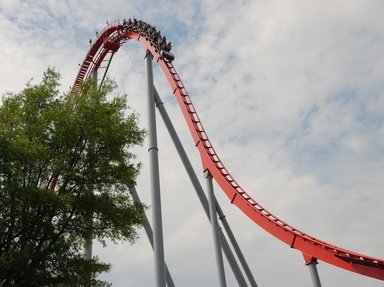
"Wood" you be so kind? Trivia Quiz
Pick the Wooden Coasters
It's no secret I love roller coasters of all kind. But my true love is wooden coasters. So, can you help me and tell me which of these I need to ride? I have not included any hybrid coasters (steel track on wooden supports) - all pure wood or steel!
A collection quiz
by WesleyCrusher.
Estimated time: 3 mins.